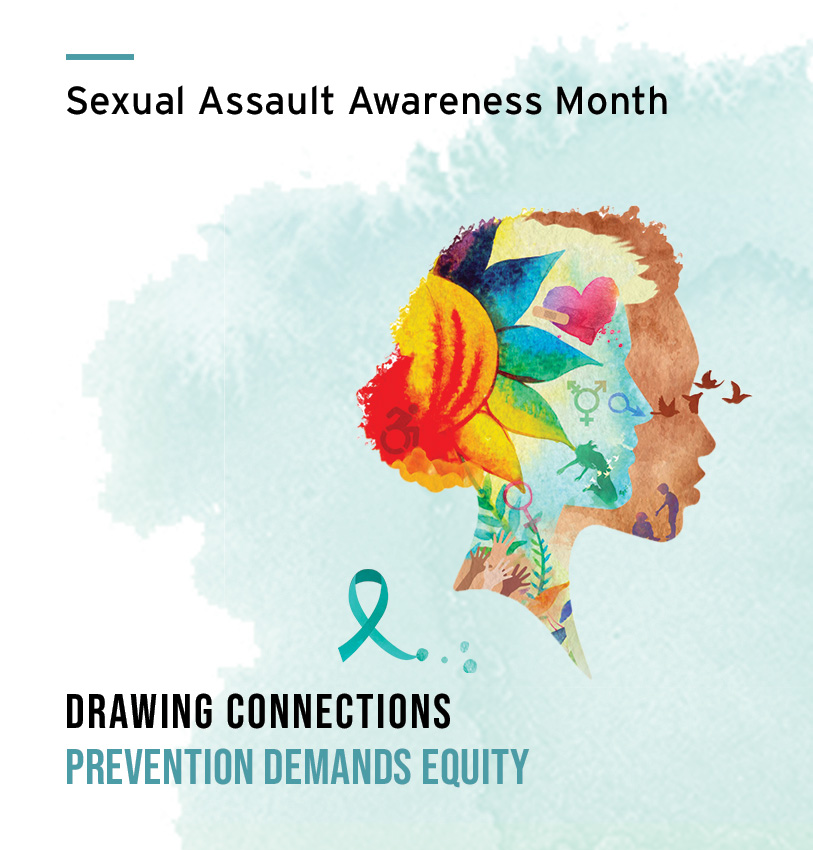Day of Action
The first Tuesday of every April is the Sexual Assault Awareness Month Day of Action.
SAAM - Get Involved
There are many ways to get involved in spreading awareness and taking action during #SAAM2025.
Drawing Connections: Prevention Demands Equity
We can trace a line from sexual violence to systems of oppression, and we can’t end sexual violence without also ending racism. Drawing Connections: Prevention Demands Equity calls on all individuals, communities, organizations, and institutions to change ourselves and the systems surrounding us to build racial equity and respect.
Existing Measures
It is easy to get caught up in the idea of using measures that have been validated through research studies (e.g., the Illinois Rape Myth Acceptance Scale) as your tools of choice. While there are definite benefits to this (see below), there are also significant drawbacks. As with all things in evaluation, using existing measures should be done very deliberately and should not be considered the default option when planning your evaluation.
Evaluation During a Crisis or Disaster
When disaster strikes, it tears the curtain away from the festering problems that we have beneath them.
- Barack Obama
Evaluation with Minimal Resources
Rape crisis centers, other sexual violence service providers, and community-based organizations often struggle to maintain adequate resources to serve their communities. When this is the case, it can feel difficult to earmark money for evaluation. However, evaluation is a critical and integral part of accountability and provision of effective, high quality services. Additionally, it’s still true that resources can be tight and that some funders, while requiring evaluation, impose restrictions on how much money can be spent on evaluation practice.
Case Studies
In a effort to learn from preventionists and evaluation partners around the country, this section of the toolkit provides case examples and case studies in sexual violence prevention evaluation. If you have a lesson learned that you would like to share, you can submit your case examples for consideration by filing out this brief
Working with External Evaluators, Colleges, and Universitites
Colleges and universities can be great resources for agencies that need assistance with developing evaluation processes for their work. Depending on your budget and the scope of your evaluation, you might want to look at hiring an external evaluator that might be a professor or graduate student for assistance. Also, it’s not unusual for students to need program evaluation internships or projects for classes.
Paginación
- Página anterior
- Página 2
- Siguiente página

